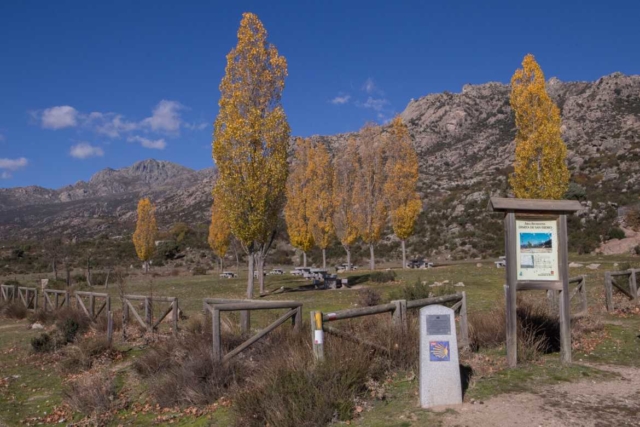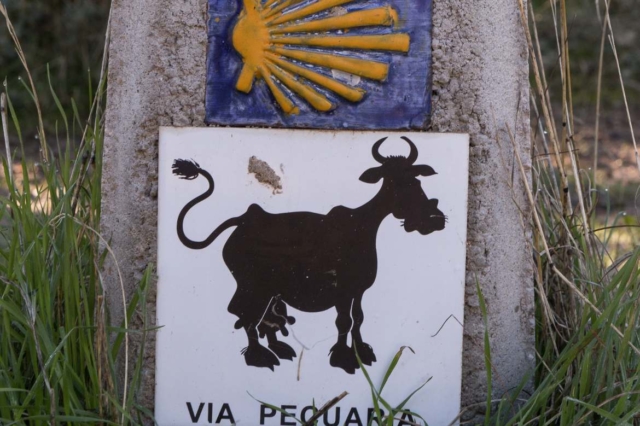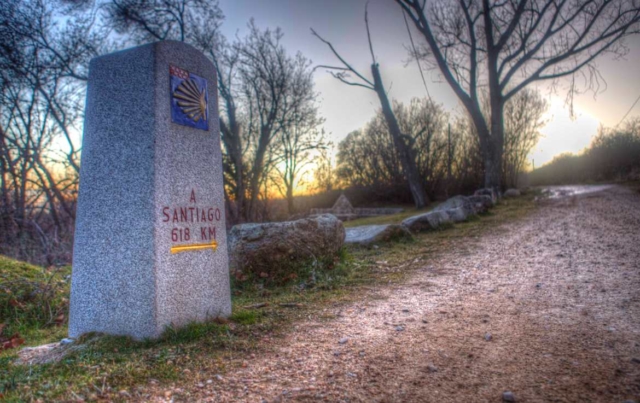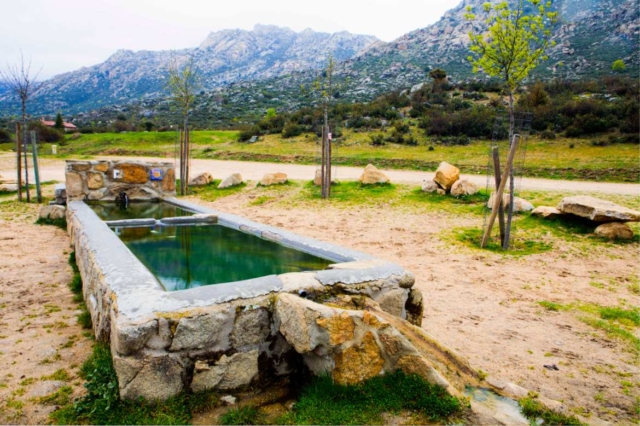The Camino de Madrid is one of the least-known routes, though it has more and more pilgrims every year and it is becoming one of the most important pilgrimage hubs. Taking this path is an easy task thanks to the yellow arrows that guide you every step of the way.
This is the Camino de Madrid that goes to Santiago de Compostela, a surprising pilgrimage through all the mysteries and Castilla holds and treasures. It is a bidirectional path and throughout its history it has served saints, kings, artists, soldiers, salesmen, pilgrims, and those who built the Castillian spirit and its great landscape, both as legendary as its blue sky! And now that modern times seem to be going on a different path, it has been rediscovered and is being used again by today’s pilgrims.
The Sierra de Guadarrama is the highest part of the Castillian Meseta. Evoking the old names, we have Castilla la Nueva to the south, and Castilla la Vieja to the north. Our Camino links the two of them and is the starting point of the enduring ascent to the Sierra via the Fuenfría pass (1,790 metres), which is now a National Park. On the other side is Segovia, where the unexpected and ferocious Tierra de Pinares leads us to Valladolid. Then, we find the Montes Torozos and its erosion-created valleys after which we go deeply into the Tierra de Campos where, in Sahagún, the Camino de Santiago begins.
Mataelpino is located in one of the stage of the Camino de Santiago. When leaving Manzanares el Real, the path goes below one of highest peaks of the Sierra de Guadarrama, La Maliciosa. Before reaching town, you will pass by the Recreational Area of the San Isidro Chapel, where you can stop by the fountain carrying the Camino symbol to refresh yourself a bit before making the last push to finish the stage. You’ve only got 619 km left to go until Santiago!
You can download the route in KMZ format here.
Useful tips
Clothes and equipment
- Sleeping bag and mat
- Three pairs of socks and underwear
- Three t-shirts (preferably cotton)
- One polar fleece or coat, depending on the season
- In winter, a hat and gloves
- Swimsuit
- Pants and shorts
- One sweater
- Raincoat
- In summer, a hat
- A pair of previously worn boots or trainers if you are riding a bike, and a pair of sandals to rest at the end of the day.
Fist aid kit
- A needle and thread for blisters (or liquid bandage, blister cushions, Compeed)
- Scissors, tape, bandage, and gauze
- Anti-inflammatory cream and painkillers
- Sun cream and lip balm
- Alcohol and disinfectan
Other must-bring items
- ID and Health Insurance Card
- Pilgrim accreditation
- Map and guide for El Camino
- Camera
- Cutlery and pot
- Energy bars
- Water bottle
- Lantern
- Toiletries bag
- Toilet paper
- Towel
- Pillow cover (the sleeping bag one will do)
- Sewing kit
- A walking stick or staff
http://www.demadridalcamino.org/
YOUR ACCREDITATION
WHERE TO GET IT
Office of the Association of Friends of the Caminos de Santiago of Madrid
(Oficina de la Asociación de Amigos de los Caminos de Santiago de Madrid)
Calle Carretas 14, 7ª planta (Madrid)
T: +34 91 523 22 11
Alcalá de Henares Bishopric (Obispado de Alcalá de Henares)
Pza. de Palacio 1 bis. Alcalá de Henares (Madrid)
Madrid Archbishopric (Arzobispado de Madrid)
Catedral de la Almudena
Calle Bailén 8 (Madrid)
T: +34 914546400
Santiago Parish Church (Parroquia de Santiago)
Pza. de Santiago (Madrid)
T: +34 915480824
WHERE TO GET IT STAMPED en Mataelpino
Administrative Building of Mataelpino (Edificio Administrativo de Mataelpino)
Pza. de España 6.
T: +34 918426965






